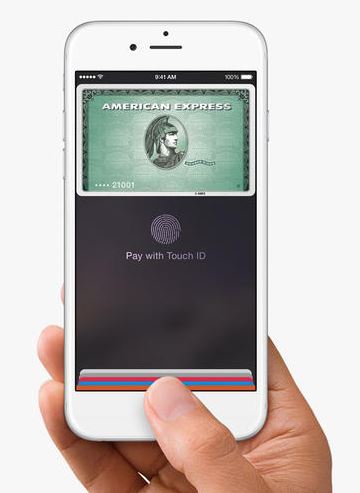Although not all things were better in the past, mobile phone batteries definitely were. The classic Nokias and Samsungs, which you could use only to make calls, would easily last for up to two weeks in standby mode. Conversely, you’ll be lucky to get a full 24 hours of battery power from one of the latest smartphones. This is due to improved and more powerful components, countless additional functions, and of course the energy consumption of dozens of apps. That said, even the most heavily used smartphones can have a bit longer battery-life if you follow a few simple tricks.
Built-in ways to save some power
A few hours of battery life can be gained by using your phone’s onboard tools. For instance, your screen is an immense consumer of energy. The screensaver should be activated as soon as possible; 30 seconds of waiting time is usually enough. Both Android and iOS offer automatic brightness controls that you should limit to lower maximum levels. One trick in particular helps save power on modern OLED and AMOLED (organic-LED) screens, such as those used on the Samsung S5: Only active pixels consume power; black pixels do not. Background images with large black areas are less draining on the battery than a colorful, bright image – so choose your images wisely.
Control larger data updates manually
Next up for making a big difference are the interfaces to the outside world. Bluetooth, WiFi, and GPS consume a disproportionately high amount of power. If you don’t need to use the smartphone’s wireless connections, deactivate them. In most cases, it’s also possible to throttle the data-connection speed and save power in the process by using UMTS instead of LTE or 3G instead of UMTS. A reduced bandwidth is also more than fine if you’re just checking your emails occasionally. What’s more, push services like email and regularly staying in touch via the Internet really drain the battery. If you collect your emails at the press of a button and also update Facebook manually, your battery will last much longer.
Be discerning about the apps you use
In this respect, apps that are sponsored by ads are also fatal. Compared to paid apps, they communicate more often with the developer to share location data and other information – pushing the charging indicator into the red. Widgets for weather forecasts or audio streaming of Internet radio services are power hungry as well. It’s also worthwhile to deactivate automatic app updates. Downloading an update doesn’t just require a lot of power; the apps constantly checking to see if a new version is available also drains battery. The Google Play Store is configured by default to download app updates automatically.
Double-check app permissions
Depending on your version of iOS or Android, it can become a real game of hide and seek to find out whether apps remain active in the background. Later mobile OS versions make it easier for users to find out which apps are the most power-hungry. In most cases you can also remove the app’s permission to remain active in the background. If the operating system doesn’t reveal any (or very little) information about how power is being consumed, other apps can help. One Touch Battery Saver (Android, free) provides information on how much power apps are consuming and switches off Bluetooth, WiFi, and GPS positioning automatically, according to predefined rules. Other apps like Juice Defender (Android, free) and Tasker (Android, € 4.49) use profiles for specific situations that only allow you to use essential apps and interfaces.
Apple makes it difficult for apps to save power actively. The security model implemented in iOS prevents intervening in other apps’ runtime behavior. As such, most apps primarily supply users with information, based on which they must then decide which apps they want to continue to have running. Battery HD+ (iOS, free) also does a detailed job of helping reveal the most power-hungry apps, as does Battery Doctor Pro (iOS, free). It’s worthwhile checking on a regular basis as even reliable apps suck the battery dry as a result of faulty updates. Scotty Loveless describes in even more detail all the steps for getting maximum life out of iOS devices in the “ultimate guide to solving iOS battery drain.”
The future is just… different
There is little to criticize when it comes to advancements in rechargeable batteries and technology. The memory effect of the past is no longer an issue for standard li-ion and li-polymer batteries, plus they’re charged to perfection using extremely smart charging circuits. The old rule of “only recharge the battery once it’s completely flat†is no longer valid. Modern batteries can and should be connected to the charger as often as possible. Extreme temperatures, however, are still public enemy number one, with heat in particular causing batteries to lose storage capacity rapidly. As such, never leave your smartphone or tablet in direct sunlight or in the car during summer.
And if, despite all of these tips and tricks, some of you find your battery doesn’t pack enough power to keep your smart phone running as long as you’d like, you can always buy an additional battery. These are available in stick form or as a slim gadget for handbag or briefcase. There are also some really stylish rechargeable battery packs out there which additionally serve as smartphone cases.
The post Tips and tricks how to improve smartphone battery life appeared first on Avira Blog.

 It’s more or less impossible to check all links individually in detail.
It’s more or less impossible to check all links individually in detail.  Some links are weaker than others and make the whole chain vulnerable.
Some links are weaker than others and make the whole chain vulnerable. When a vulnerability is found, it’s critical to fix it. CORRECTLY.
When a vulnerability is found, it’s critical to fix it. CORRECTLY. So, a patch is created…
So, a patch is created… By looking closely where the patch was applied, it’s possible that a related and smaller vulnerability which is still not fixed might be easy to find, thanks to the information provided by the patch.
By looking closely where the patch was applied, it’s possible that a related and smaller vulnerability which is still not fixed might be easy to find, thanks to the information provided by the patch.


